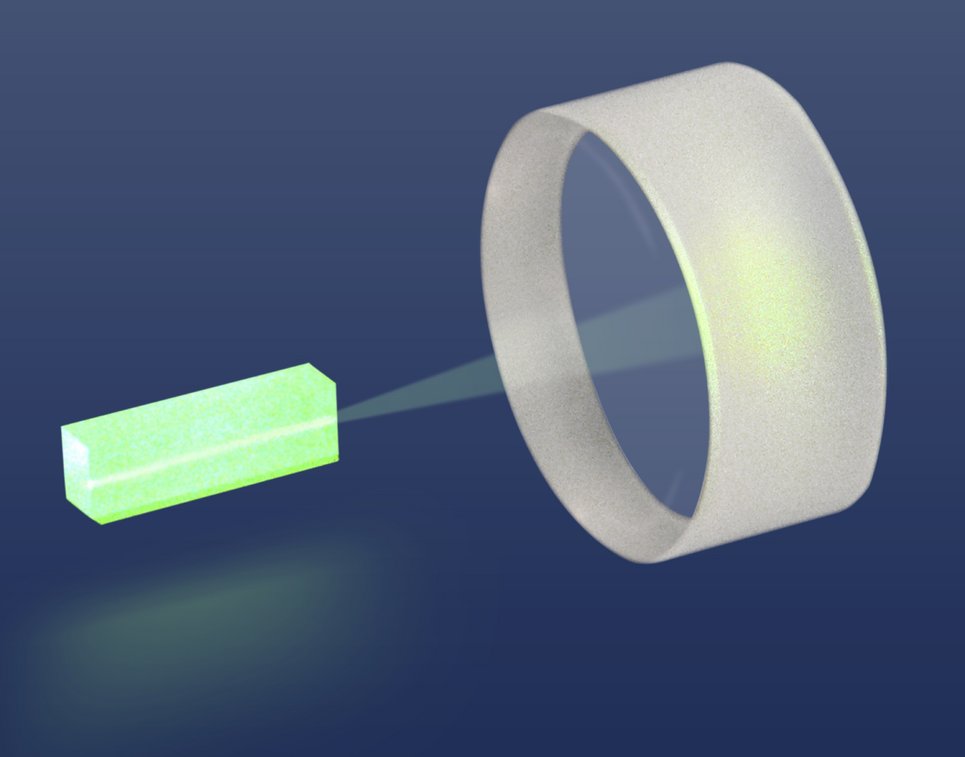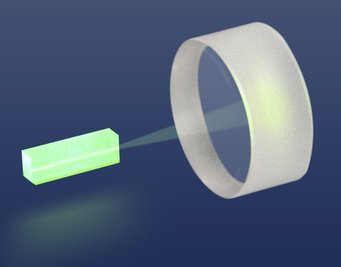World record with squeezed light
Light with special quantum properties enables for the first time a new method to measure photodetector quantum efficiency
So-called squeezed laser light has tailored quantum properties and enables measurements more precise than those with normal laser light. For six years it has been used successfully at the gravitational-wave detector GEO600 near Hanover, Germany, to increase the measurement precision significantly. In a laboratory experiment, researchers at the Max Planck Institute for Gravitational Physics (Albert Einstein Institute, AEI) and at the Leibniz Universität Hannover have now generated the most strongly squeezed laser light ever and have surpassed their own world record by far. The record-breaking light also enables a new method to determine the quantum efficiency of photodetectors. The new technique is independent of established methods and does not require laboriously calibrating reference light sources.
Tools for gravitational-wave astronomy

Laser light is one of the tools of the trade for gravitational-wave astronomy, which began one year ago with the first direct observation of merging black holes. Interferometric detectors such as Advanced LIGO, Virgo and GEO600 measure kilometer long distances to the precision of a fraction of an atomic nucleus using laser light.
The precision of these detectors is – among other things – limited by the quantum mechanical “noise” of the light. AEI researchers have been working for many years on the development of ever better light sources with quantum noise better than nature usually allows – so-called squeezed light (see explanation at the bottom of the article). These light sources have been improving the sensitivity of the gravitational-wave detector GEO600 near Hanover, Germany, since 2010.
Breaking their own world record
In a laboratory setting, AEI scientists have now broken their own world record from 2010 for the generation of squeezed light. They suppressed the quantum noise by a factor of 32. To achieve this new world‘s best, the physicists improved upon existing experiments with low-loss optical components and specially optimized photodetectors.
“At the Albert Einstein Institute we have in the past years created a unique wealth of experience in optimizing and applying squeezed light,” says Dr. Henning Vahlbruch, postdoc at the AEI. “Based on our previous experiments, we could now break our own world record and at the same time experimentally show an entirely new application of squeezed light.” Vahlbruch is the lead author of the publication that recently was published in Physical Review Letters, which was also highlighted by the journal as an Editors‘ Suggestion and Featured in Physics.
New method for the determination of quantum efficiency
The extremely strongly squeezed light for the first time enables an entirely new method to determine the quantum efficiency of photodetectors. These devices play an important role in many modern experiments, including gravitational-wave detectors. There they measure the light at the detector output, whose fluctuations reveal gravitational wave signals. A crucial factor is how efficiently the photodetector converts the impinging light into electrical current – the so-called quantum efficiency.
While previous methods to determine the quantum efficiency require specially calibrated light sources, this is not necessary for the new technique developed in Hanover. The trick lies in the simplicity of the measurement. The squeezing strength of the laser light registered by the photodetectors could in principle be infinitely large. In reality, however, it is limited by optical losses.

In their experiment, the Hanover physicists measured a total loss of 2.5% ± 0.1% of the laser light. Now, they only had to determine all losses caused by lenses, mirrors, and other optical elements. The found that these could account for 2.0% of the total loss. The remaining 0.5% must be the loss at the photodetector. The researchers thereby determined a quantum efficiency of 99.5% ± 0.5% for their specially optimized photodetector.
“Our new technique is an elegant solution to determine the quantum efficiency, because it is in a sense a very direct measurement,” says Dr. Moritz Mehmet, postdoc at the AEI and co-author of the publication. “With the squeezed light we neatly circumvent the laborious calibration of reference light sources. Another plus is that our method can be used quite easily at different light powers.”
Technology for more sensitive gravitational-wave detectors

In the future the new world record in squeezed light will be applied in gravitational-wave detectors such as Advanced LIGO, Virgo, and GEO600. Their sensitivity can be improved further by the use of similar squeezed light sources and by minimizing optical losses. Planned third-generation detectors such as the Einstein Telescope will also depend on squeezed light.
Laboratory experiments with even more strongly squeezed light will enable even more precise measurements of the quantum efficiency of photodetectors. In the long term, they could become an independent and precise alternative to established methods and enable other applications in quantum metrology.

What is squeezed light?
Light is a quantum phenomenon and therefore plays by the probabilistic rules of quantum physics. The physical observables that characterize light vary a little from measurement to measurement – a consequence of Heisenberg‘s uncertainty principle.
If one measures the phase and the amplitude of the electromagnetic waves used to describe light, and plots them in a diagram (1) the measurement points will scatter over a fuzzy circular area. Its diameter determines the quantum mechanical uncertainty when measuring the phase or the amplitude. The center of the area is given by the classical (non-quantum mechanical) measurements of phase and amplitude and shown by the head of the grey arrow.
In squeezed light, the circular area is now squeezed to an ellipse. According to the uncertainty relation, the surface area is conserved – while the measurement uncertainty in one observable is lowered significantly, it increases in the other. Depending on the measurement, this can be very useful. The gravitational-wave detector GEO600 has been using squeezed light sources since 2010.



